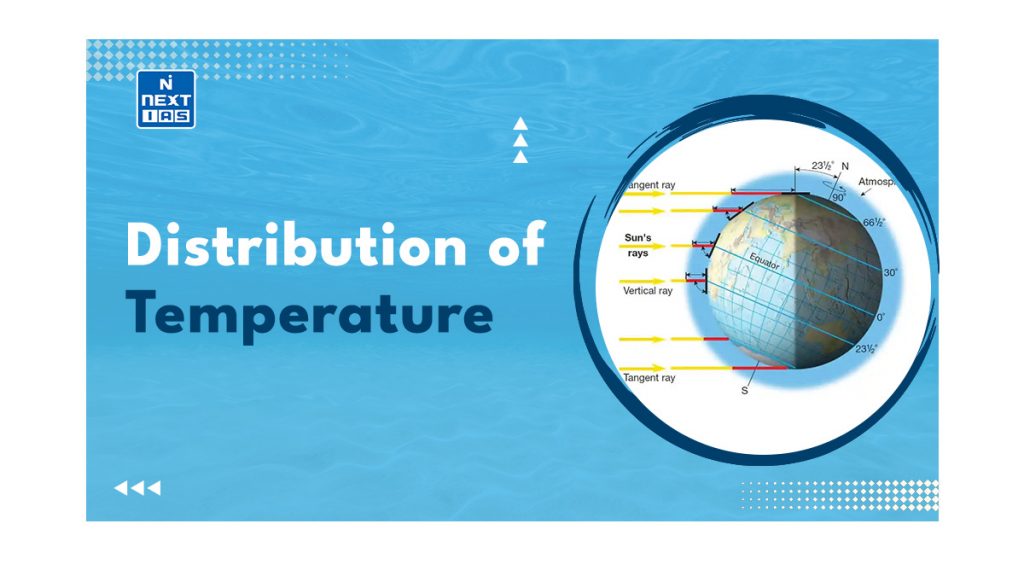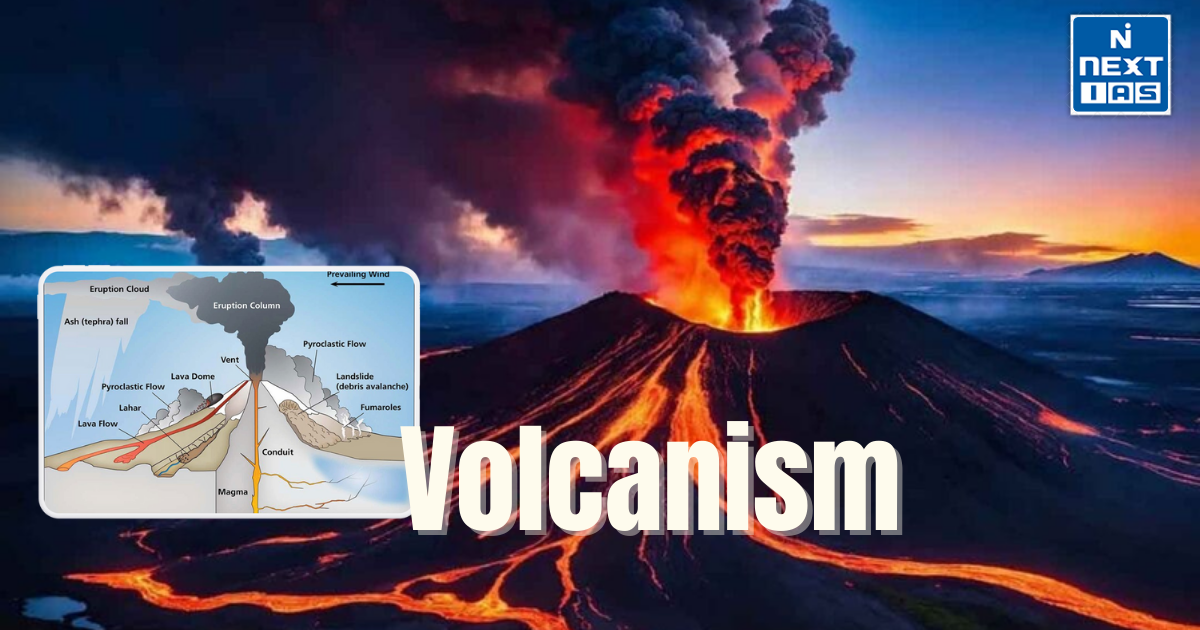
The Distribution of Temperature and salinity of oceans play crucial roles in various phenomena such as the vertical and horizontal circulation of ocean water, the movement of surface and subsurface currents, and the climate of different locations. These factors vary across the globe, resulting in diverse impacts on different regions. This article aims to provide a comprehensive overview of distribution of temperature and salinity in the ocean.
Average Temperature of Ocean water
- The sea surface typically has an average temperature of approximately 20°C (68°F), although it can vary depending on the location.
- In warm tropical regions, the temperature can exceed 30°C (86°F), while at high latitudes, it can drop below 0°C. Generally, as you go deeper into the ocean, the water becomes colder.
Distribution of Temperature
How is temperature distributed throughout the ocean?
- The temperature of the water in the ocean plays a crucial role for marine organisms such as phytoplankton and zooplankton.
- It also has an impact on the climate of coastal areas and the plants and animals that inhabit them.
- Thermometers placed at different locations in the ocean are able to measure the temperature with an accuracy of approximately ±0.2° C.
- In tropical regions, the ocean can be divided into three layers from the surface to the bottom.
- The initial layer corresponds to the uppermost layer of warm ocean water and has a thickness of 500 meters. Its temperature ranges between 20° and 25°C.
- The thermocline layer is a vertical zone of oceanic water located below the surface layer. It is distinguished by a significant decrease in temperature as depth increases.
- The third layer of the ocean is characterized by extreme coldness and it stretches all the way down to the ocean floor.
Factors Affecting the Distribution of Temperature
- The Sun is the primary contributor to the temperature of ocean water. It emits radiant energy, known as insolation, in the form of shortwave electromagnetic waves from its photosphere.
- This energy is received at the surface of the ocean. Additionally, some energy is received from below the ocean’s bottom and through the compression of seawater.
| Latitudes | – The temperature of surface water decreases as you move from the equator towards the poles. This is due to the Sun’s rays becoming more slanted, resulting in a decrease in the amount of sunlight reaching the water in polar regions. – However, the poles in both hemispheres, the temperature of surface water becomes higher than the air temperature. |
| Unequal Distribution of Land and Water | – In the northern hemisphere, the oceans receive more heat because they come into contact with a larger amount of land compared to the oceans in the southern hemisphere. – As a result, the surface water in the northern hemisphere tends to have a higher temperature than in the southern hemisphere. – The isotherms in the northern hemisphere are irregular and do not follow latitudes due to the presence of both warm and cold land masses. |
| Prevailing Wind | – The distribution of ocean water temperature is significantly influenced by wind direction. – When winds blow from the land towards the oceans and seas, they push warm surface water away from the coast, causing cold bottom water to rise up from below in a process called upwelling. (Note: Upwelling is also another factor) – This leads to a longitudinal variation in temperature as warm water is replaced by cold water. – In contrast, when onshore winds blow towards the coast, they cause warm water to accumulate near the coast, resulting in an increase in temperature. |
| Ocean Currents | – Surface temperatures of the oceans are regulated by warm and cold ocean currents. – Warm currents increase the temperature in the regions they pass through, while cold currents decrease the temperature. – For instance, the North Atlantic Current (warm) and (Labrador cold). |
Horizontal and Vertical Distribution of Temperature
Horizontal Distribution of Temperature
- On average, the surface water temperature of the oceans is 26. °C (80°F), gradually decreasing from the equator towards the poles.
- In the northern hemisphere, the oceans tend to have a higher average temperature compared to the southern hemisphere.
- This temperature variation between the hemispheres is due to the unequal distribution of land and ocean water.
- The average annual temperature of the Pacific Ocean is slightly higher than that of the Atlantic Ocean (16. 1 °C or 60°F) and the Indian Ocean (17°C or 60. °F).
- Additionally, the surface water temperature of the oceans is higher than the air temperature above the ocean surface, indicating that the ocean surface releases heat to the atmosphere.
Vertical Distribution of Temperature
- The maximum temperature of the oceans is consistently found at their surface because it directly absorbs sunlight, and the heat is then transferred to the deeper layers of the oceans through conduction.
- Sunlight is able to penetrate up to a depth of 20 meters in the ocean and rarely goes beyond 200 meters.
- The upper surface of the ocean, known as the Photic or Euphotic zone, extends up to a depth of 200 meters and is where solar radiation is received.
The General Distribution of Salinity in the Ocean
Salinity of Ocean Water
- The salinity of sea water refers to the overall weight of dissolved salts in one kilogram of sea water.
- Salinity is measured in units of g/kg, often denoted as p.p.t. (Parts per thousand) or ‰ (per mil).
- On average, sea water contains approximately 3½ percent salt, meaning that every 1,000 grams of sea water contains nearly 35 grams of salt.
- Out of the total salt content, sea water consists of about 77 percent sodium chloride or common salt.
Factors Affecting Distribution of Salinity of Ocean Water
| Evaporation | – There is a direct correlation between the rate of evaporation and salinity. – or, when evaporation is higher, salinity also tends to be higher, and vice versa. – For instance, areas near the tropics have higher salinity compared to the equator due to the high rate of evaporation in these regions. – This is particularly true when dry air is present over the tropics of Cancer and Capricorn. |
| Precipitation | – Precipitation and salinity have an inverse relationship. – In other words, when precipitation is high, salinity is low, and vice versa. – This is why areas with high rainfall, like the equatorial zone, tend to have lower salinity compared to regions with low rainfall, such as the sub-tropical high pressure belts. |
| Influx of river water | – The rivers transport salt from the land to the oceans. However, when large and voluminous rivers flow into the oceans, they bring a significant amount of water, which leads to a reduction in salinity at their mouths. |
| Atmospheric Pressure and Wind Direction | – The salinity of the ocean’s surface water rises under anticyclone conditions of stable air and high temperature. – High pressure zones in the subtropics are examples of these circumstances. – Winds also aid in the redistribution of salt in the oceans and by driving salty water to less salty places, which causes the former to become less salty and the latter to become saltier. – These areas are known as upwelling regions because they see the replacement of saline surface water with substantially less saline subsurface water. |
| Impact of Ocean Currents | – Through the mixing of seawaters, ocean currents influence the regional distribution of salinity. – Warm equatorial currents transport salt away from the continents’ western coasts and collect it along their eastern coastlines. |
Horizontal Distribution of Salinity
Higher Salinity Near Tropic of Cancer and Tropic of Capricorn
- The temperature near the tropics of Cancer and Capricorn is very high. Here, evaporation is very high near the tropics because the sky is usually clear and the oceans are exposed to the onshore trade winds. This causes concentration of salts.
- Hence salinity of seas and oceans in these regions is very high.
Lower Salinity in Equatorial Regions
- In the equatorial region, the salinity is comparatively low due to the higher amount of rainfall. And this region is impacted by various large rivers that bring fresh water into the ocean.
- Consequently, the combination of increased rainfall, higher relative humidity, cloud cover, and the influx of fresh water prevents significant evaporation, resulting in lower salinity levels.
Lowest Salinity in Poleward Region
- Towards pole the salinity decreases because of low evaporation and low temperature. In addition to this, the melting of ice provides the fresh water which leads to decrease the salinity in the polar region.
Vertical Distribution of Salinity
Salinity Increases with Increasing Depth
- Salinity tends to rise as the depth increases in high latitudes.
- However, in middle latitudes, this trend is limited to a depth of 200 fathoms from the surface, after which salinity decreases with increasing depth.
- At the equator, the surface salinity is low due to high rainfall and the movement of water through equatorial currents.
- However, beneath the surface, higher salinity levels are observed.
FAQ
Why are there Differences in the Salinity of Oceans?
Ans. The absorption of salt in seawater (salinity) varies with temperature, evaporation, and precipitation.






